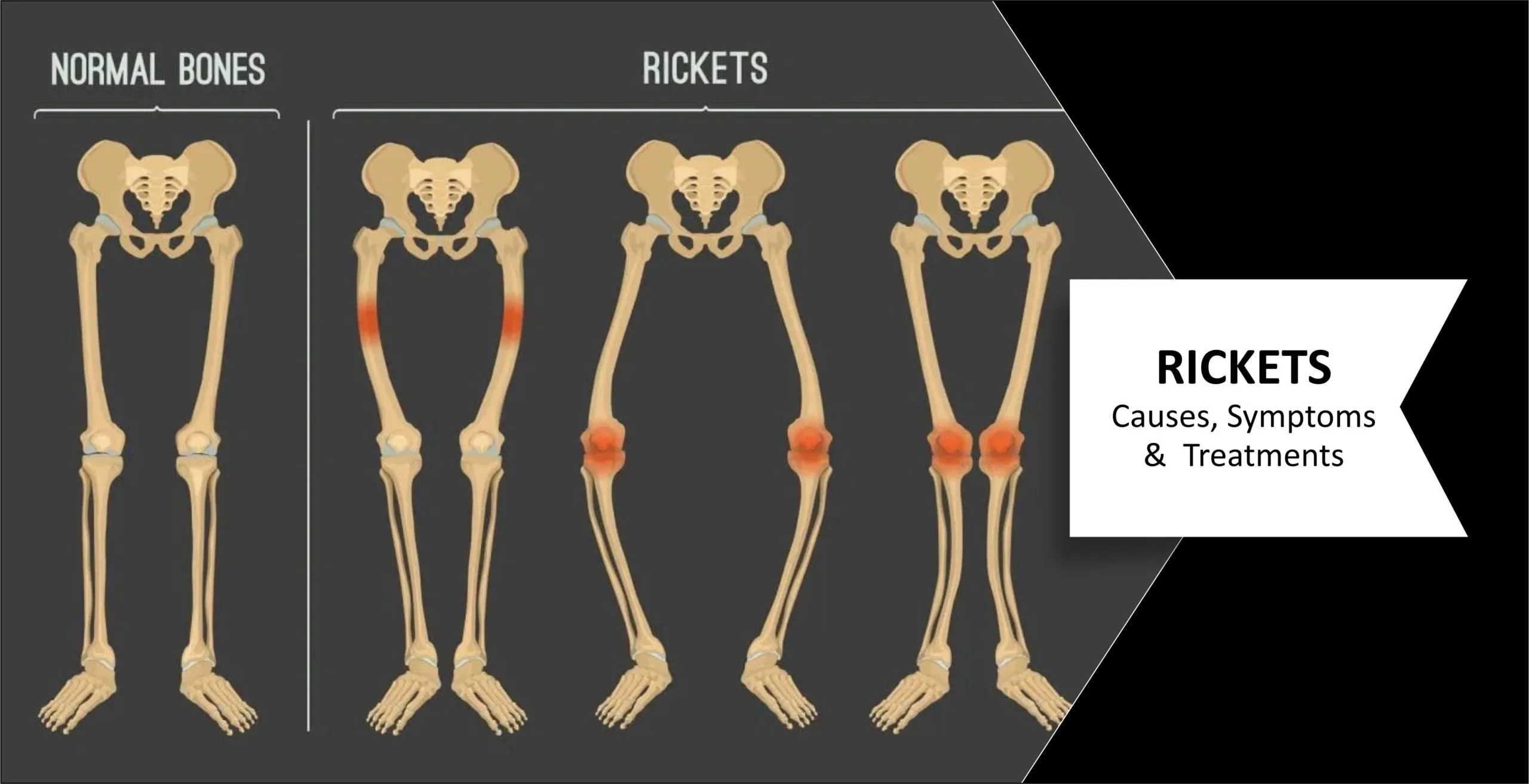Rickets - Everything You Should Know About
Rickets:
Rickets is a common disorder found in children where bones are deformed and weak. The condition is commoner in developing countries than developed countries. It is usually found in childhood but may develop among adults, then it is known as Osteomalacia. The primary reason of the condition is deficiency of Vitamin D which might result from lack of exposure to Sun.
Causes:
Commonest cause of rickets is deficiency of Vitamin D in the body. Lack of exposure to sunlight and dietary deficiency of Vitamin D can lead to development of this condition. As vitamin D is extremely essential for absorption of calcium by the body, lack of it directly affects the bone strength.
Genetic defect is another important cause of rickets, a rare generic condition called as hypophosphatemic rickets. This generic effect hampers the processing of phosphates in the body properly. Lack of phosphorus in the blood further affects the bones.
Some other disease conditions related to intestine, liver and kidney can also affect the absorption and metabolism of certain vitamins and minerals leading to development of rickets.
Risk Factors:
- Poverty and malnutrition are common risk factors for rickets. Therefore, the condition seems more common in developing countries.
- People having a darker skin ton has high levels of melanin which makes absorption and processing of Vitamin D difficult.
- Children born to mothers who had vitamin D deficiency during pregnancy are prone to rickets.
- Babies born prematurely are at high risk
- Some medicines also interfere with absorption of calcium in the body
- Babies dependent on the breastfeeding exclusively often develop vitamin D deficiency as breast milk lacks the same. Such children must take additional doses of vitamin D to meet the requirement.
Symptoms:
The common symptoms of rickets are:
- Floppiness in the limbs of an infant
- Proneness to fracture
- Bone pain and bone tenderness
- Costochondral swelling, or prominent knobs on the bone between the ribs and the breast plate
- Harrison’s groove, which is a horizontal line visible on the chest where the diaphragm attaches to the ribs
- Knock knees in older children
- Soft skull
- Short height and low weight
- Possible spinal, pelvic, or cranial deformities
- Bowed legs in toddlers
- Uncontrolled muscle spasms that can affect the entire body
- Delayed growth
- Widening wrists
Diagnosis:
Physical examination often gives an indication of the disease; however, some confirmatory tests may be needed. Diagnosis of nutritional rickets usually is done by tests which are conducted for measuring the levels of calcium, phosphorus, alkaline phosphatase, 1, 25OH-VitD, 25OH-VitD in the blood. X-ray helps in visualizing the alteration in the shape of the bones, widening and fraying of physis of wrist, distal femur, proximal tibia.
Other rare types of rickets need specialised investigations to exclude kidney problems, genetic defects, etc.
Complications:
Complications usually develop if the condition is left untreated.
- Permanent bone deformities due to weakness and delayed growth
- As the calcium levels are extremely low, it can result in problems like seizures, cramps and respiratory distress
- Very rarely, few cases of rickets can lead to weakening of the cardiac muscles
- Dental defects are also common among children affected with rickets
Treatment:
Treatment primarily depends on increasing the levels of calcium, phosphates and Vitamin D in the body. Exposure to the sunlight, intake of cholecalciferol, certain fish oils which are rich in Vitamin D often help in preventing or treating rickets.
For children developing rickets as a result of malnutrition, vitamin D supplements may be needed annually in addition to vitamin D and calcium rich food. For patients developing rickets as a genetic disease, medications increasing phosphorus in the body and activating vitamin D may be helpful. For rickets generating from other systemic diseases, it is important to find out the cause and treat the particular condition of that organ.
Prevention:
Prevention involves absorption of vitamin D by daily exposure to sunlight, and addition of calcium and vitamin D to diet.
Estimating the exact amount vitamin D needs of each human is difficult because it is hard to measure how much of the vitamin is synthesized in the skin via sunlight.
In countries that are not near the tropics and sunlight intensity is lower, it is important to provide a supplementary intake of vitamin D to prevent rickets.
This may involve:
- Enriching milk, foods for infants, and some other food products
- The administration of a daily vitamin D supplement
- Massive doses of vitamin D when it is impossible for socioeconomic reasons to provide a vitamin supplement
Adding vitamin D to a diet is relatively simple. The following foods are rich in vitamin D:
- Eggs
- Fish oils
- Margarine
- Some fortified milks and juices
- Some oily fishes, including mackerel and salmon
- Some soy milk products have vitamin D added
In areas with a lot of sunlight, the best way to prevent rickets is to expose the child to the sun.
Book An Appoinment at - https://www.miracleshealth.com/orthopaedics

 Appointments
Appointments




.webp)
_Symptoms,_Causes,_Diagnosis,_Prevention_and_Treatmen.webp)